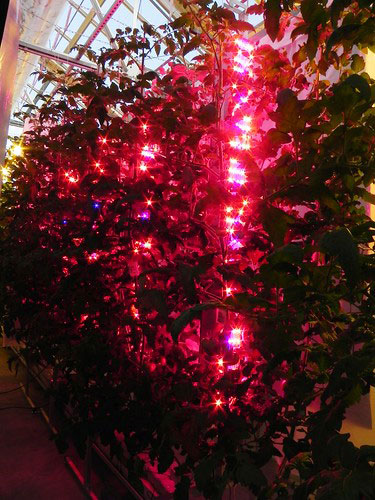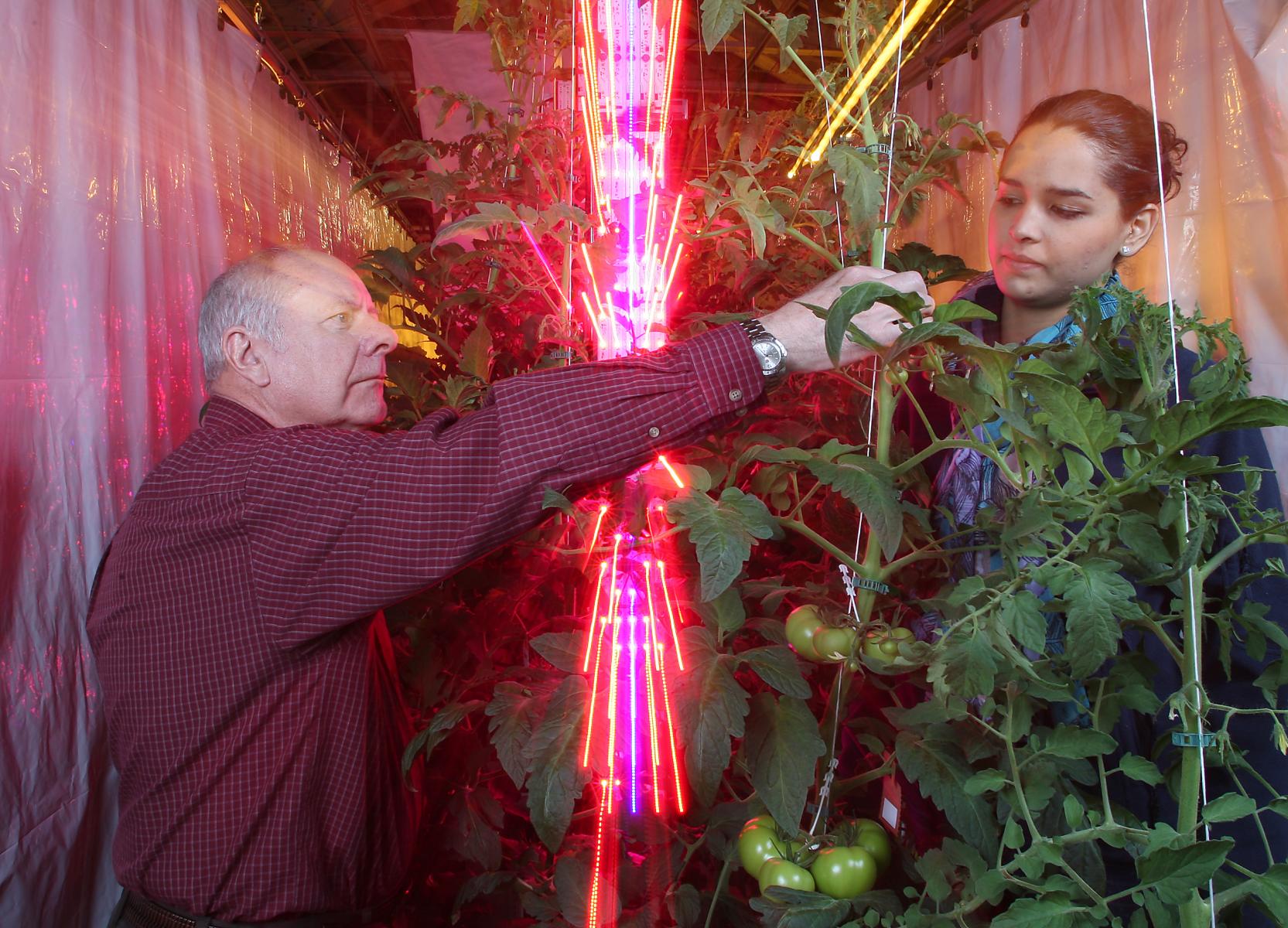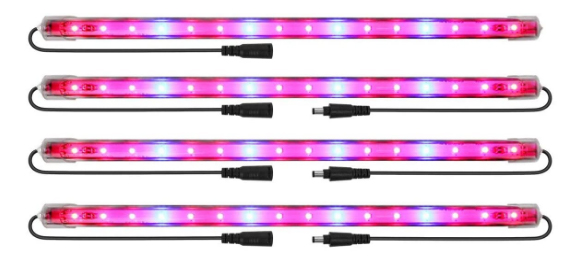
A major challenge for good growth of houseplants indoors, particularly in winter, is poor light. Most homes are just too dark for plants to grow well in winter, especially those plants requiring high light.
Signs your plants are not getting enough light are small leaves, long thin stems, failure of blooming plants to flower and lighter-than-normal colored foliage. For example, a geranium grown in low light tends to be spindly and have light green leaves, while the same plant in bright light will be shorter, better branched, with larger dark-green leaves.
Last January, I wrote about which light wavelengths plants need most for good growth, choosing the best window location for high light plants and compared the efficiency of traditional incandescent lights vs. fluorescent lights. Let There Be Light...For Your Plants.
Today, let’s look at how fluorescent and LED lights compare for plant growth.
Fluorescent vs. LED Lights
Fluorescent lights have been the standard for many years. They are cool enough to be placed very close to plants. Standard cool-white fluorescent lights – whether tubes or compact fluorescent bulbs - produce mostly blue light and are low in red. Most foliage plants grow fine with this light spectrum, however, special horticultural-type fluorescent lights or “grow bars” are needed for blooming plants requiring higher levels of red-light wavelengths. Warm-white lights are less effective for plant growth.
 LED or light-emitting diode lights can be customized to provide both blue and red-light wavelengths similar to a fluorescent “grow bar”. They emit almost no heat and are very long-lived, up to 50,000 hours. In the past, LED lights were expensive so not a cost-effective choice compared to fluorescent lights. However, they are now common for many home and horticultural uses and are much more cost-effective.
LED or light-emitting diode lights can be customized to provide both blue and red-light wavelengths similar to a fluorescent “grow bar”. They emit almost no heat and are very long-lived, up to 50,000 hours. In the past, LED lights were expensive so not a cost-effective choice compared to fluorescent lights. However, they are now common for many home and horticultural uses and are much more cost-effective.
Research at Purdue University has shown LED lights can provide a more beneficial light spectrum to greenhouse plants than conventional lights, while using 75% less electricity.
LED Light Fixtures
A quick Amazon search of “LED house plant lights” will provide multiple LED light options for home growers, including light strips, floor or desk lamps, bulbs and hanging lamp fixtures. LED light bulbs can be inserted into a traditional light fixture or lamp.
Light intensity recommendations when using LED lights are 25W for high light plants in a 1 square foot grow space and 16W for low light plants. When using multiple lights or strips, they should be placed so their light coverage overlaps, providing enough light intensity for all plants.
Light wavelengths in the range of 400 to 700 nanometers (nm) are consider ideal for plants. More specifically, 440 nm blue light, 660 nm red light and 730 nm far red light are important for good photosynthesis and plant growth. Some light fixtures give off pink/purple visible light, which may not be aesthetically pleasing for use in a typical home setting. But others can be adjusted to give off warm or cool white visible light, which is more typical for home lighting, while still providing the necessary light spectrum for plant growth.
 One example of an LED light strip providing these wavelengths, is the Lightimetunnel LED Plant Grow Light Strips - Full Spectrum, cost $37.99 for 4-15” light strips, which can be connected end-to-end. These types of light strips are becoming the standard for indoor production of lettuce, greens or herbs and can easily be used when growing your transplants for next year’s garden. Many similar products by other manufacturers are also good options. Of course, there is still an up-front cost, but remember these lights will last for many years.
One example of an LED light strip providing these wavelengths, is the Lightimetunnel LED Plant Grow Light Strips - Full Spectrum, cost $37.99 for 4-15” light strips, which can be connected end-to-end. These types of light strips are becoming the standard for indoor production of lettuce, greens or herbs and can easily be used when growing your transplants for next year’s garden. Many similar products by other manufacturers are also good options. Of course, there is still an up-front cost, but remember these lights will last for many years.
An example of a floor lamp for larger houseplants is the AgroBrite Hydrofarm Floor Plant Light, cost $59.09. Many additional good floor light options are available, some with three or more light heads that can be directed and adjusted to provide light for several plants.
Tips on Using Supplemental Lighting
When growing transplants or seedlings in the winter months, position lights 3-6 inches above plant leaves and raise the lights as plants grow. Follow the instructions for your light system to determine correct placement and look for the signs of low light in plant growth listed above to determine if your lights are too far away.
Note: Reference to commercial products or trade names is made with the understanding that no discrimination is intended. These products are listed as examples only. No endorsement by the University of Nebraska-Lincoln is implied.
Next week, we’ll look at two more factors in good winter houseplant or transplant growth – humidity and fertilization.
Images
- Cary Mitchell, from left, and Celina Gomez harvest tomatoes grown around red and blue LED lights, which use far less energy than traditional high-pressure sodium lamps in greenhouses. (Purdue Agricultural Communication photo/Tom Campbell)
- Image of LED strip lights from Lightimetunnel.